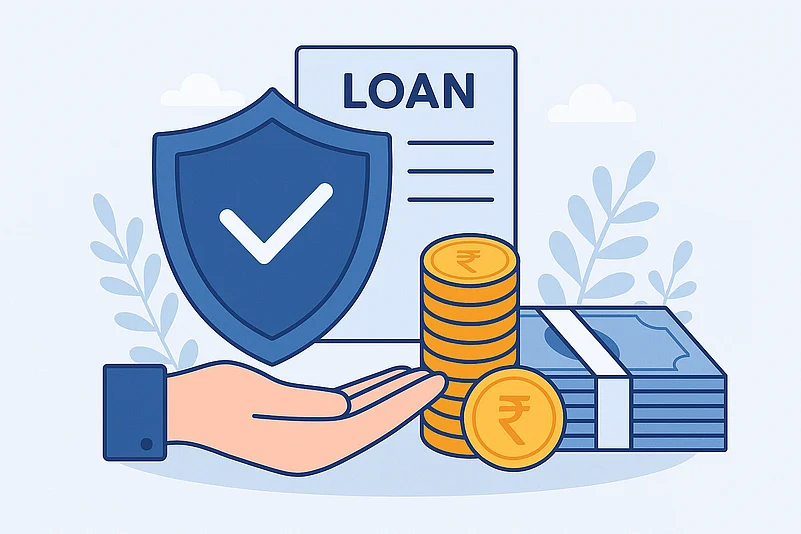Loan insurance, or loan protection, is a product that repays the balance of the outstanding loan in case of an unexpected event, like the borrower's death, loss of job, or permanent disability. It is usually offered when taking out home loans, car loans, or personal loans. However, borrowers often sign up for it without realising the cost or actual benefit.
Loan insurance is not usually a compulsory condition of loan sanction. However, banks and NBFCs often offer it as an optional product with loans, especially home and personal loans. The insurance is often a handy add-on to insure the loan liability in the event of sudden events like death or disability.
According to Reserve Bank of India (RBI) norms, the lenders cannot make purchasing an insurance policy a prerequisite for lending. Borrowers can also decide on the insurer and are not required to purchase the policy from a particular company suggested by the lender. These rules aim to make third-party products such as insurance not be sold in a manner that restricts borrower choice.
What It Covers
Loan insurance typically covers the loan to be repaid upon the borrower's death during the loan term. Some policies also offer protection against permanent disability, loss of job, or life-threatening disease. These additional protections, however, incur a premium and are subject to strict conditions.
In a standard loan protection scheme, death due to natural or accidental causes is insured. For instance, if an individual takes a 20-year house loan and dies during the 10th year, the insurance pays off the remaining amount to the lender directly and therefore does not leave the weight on the borrower's family.
Some personal loan insurance includes loss of employment and illness cover, but most likely only for 3 or 6 months EMIs at best and only for borrowers with certain conditions. Short-term layoffs, resignations, or fixed-term contract terminations are rarely covered.
How Much It Cost
The cost of loan insurance depends on the size of the loan, the age of the borrower, the duration, and the cover option. For a 20-year home loan of Rs 30 lakh, a standard loan insurance policy for the borrower's death alone may cost anywhere between Rs 25,000 and Rs 60,000 as a one-time premium based on age as well as policy terms. In a few instances, this premium is included in the overall loan amount rather than being paid in advance. Consequently, the borrowers themselves pay interest on the premium for the entire duration of the loan, too.
The average rate of interest on home loans at major banks and NBFCs is between 9 per cent and 15 per cent per year, depending on the credit score of the borrower and the loan size, as of mid-2025.
When It Makes Sense
Loan insurance can prove to be beneficial in some situations. To those who do not possess any term insurance and are the only breadwinners of their families, taking a minimal loan protection cover would safeguard dependents in case of an untimely death. It is especially relevant in the case of long-term loans like home loans, wherein the burden runs into lakhs or crores.
But if the borrower already has a term insurance policy with a sufficient cover, then little would be gained by availing another loan insurance policy. A term plan will cover both the loans, personal and others, and offers more flexibility in choosing the amount assured and the term.
Things to Check Before You Agree
Loan insurance is not a universal product. Before agreeing, borrowers should also ensure that the premium is not being added on to the loan or paid in a separate transaction. When added to the loan, the cost of borrowing is higher because of interest.
It should also be explained whether the policy is transferable in case of loan transfer and on what terms. The majority of policies do not cover pre-existing illnesses or cover only a limited amount if employment is lost.
Reading the policy booklet carefully and seeking clarification on a breakdown of the cost-benefit analysis can avoid future ambiguity.











